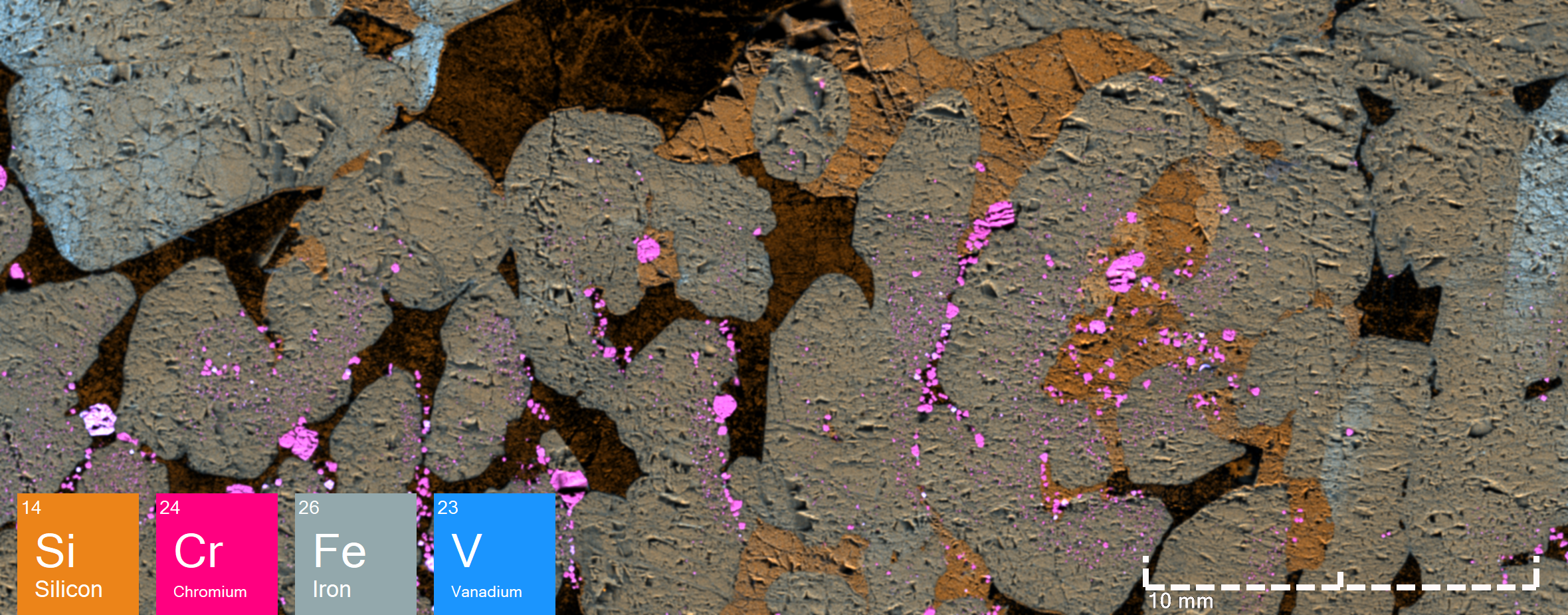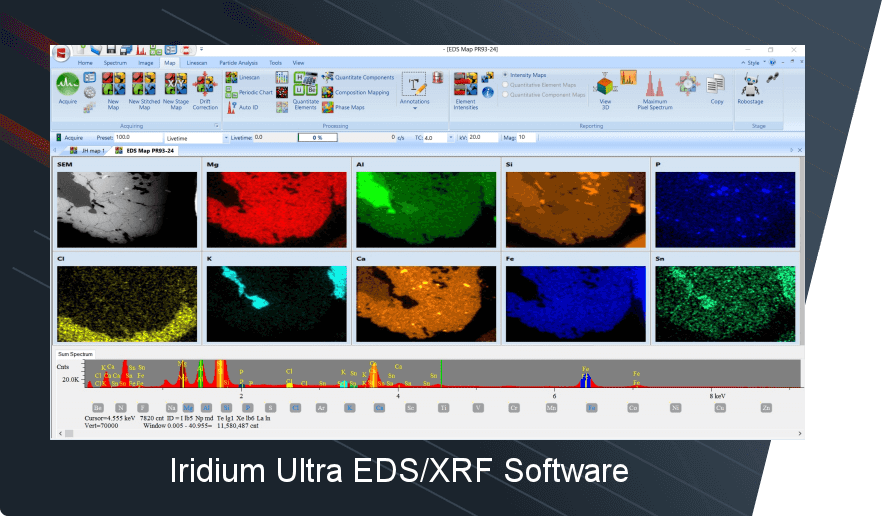Geochemistry is increasingly vital in understanding and protecting our planet. The field is thriving with innovative researchers employing new methodologies, revolutionizing environmental conservation, and sustainable resource management. Their work integrates the complex chemistry of Earth with broader scientific goals for a sustainable future.
Incorporating modern analytical tools, such as micro-X-ray fluorescence (microXRF) with a high spatial resolution (down to 5 µm in X-ray spot size), significantly enhances the capabilities of new geochemists. This technology offers detailed chemical analysis of geological samples, enabling researchers to observe and measure elemental distributions accurately. The non-destructive nature of microXRF is particularly beneficial for examining intricate features within samples, such as mineral layers or small-scale inclusions, without altering their original state. This high level of precision is essential for understanding the complex geochemical processes at play. By employing microXRF, emerging geochemists can gain deeper insights into the Earth’s composition and processes, contributing valuable data and interpretations to the field. This tool improves the quality of their research and helps streamline their investigative processes, making it a vital asset in advancing geochemical studies.
2023 Geochemical Research Trends
Pyrite Sulfur Isotope Variability
- Importance: Understanding sulfur isotope ratios in pyrite reveals insights into Earth’s geological and biological history and natural resource exploration.
- Role of MicroXRF: High spatial resolution analysis is essential for studying mineral composition, including sulfur distribution in pyrite.
Climate Impact of Aerosol Particles
- Impact: Aerosols affect climate through radiative forcing, altering cloud properties, and impacts on snow and ice.
- MicroXRF Application: Provides detailed chemical composition analysis and measures the size, shape, and surface morphology of aerosol particles, essential for understanding their role in climate systems.
Stratospheric Chemistry Post-Volcanic Eruption
- Significance: Eruptions affect stratospheric chemistry through gas and particle emissions, impacting the ozone layer and climate.
- MicroXRF Usefulness: Analyzes volcanic ash composition, providing trace element detection and particle size distribution, aiding in understanding stratospheric reactions and climatic impacts.
Examples of Detailed Chemical Analysis of Geological Samples by microXRF
Figure 1: (Image 1) Overlay of microXRF maps of geological slab sample, showcasing intricate elemental distributions of silicon, chromium, iron, and vanadium. (Image 2-4) Individual microXRF maps of the same slab sample display the distribution of Cr, Fe, and Ca using the High Noon color palette. These maps were obtained using a 5 μm spot size.
Figure 2: (Image 1-2) Overlay of microXRF maps of a geological thin section sample, showcasing intricate elemental distributions of Na and Ca and S, Ti, K, Fe, and Ca, respectively. (Image 3) A phase map of the same thin section sample, which used principal component analysis (PCA) to identify 6 different phases present in this sample. These maps were obtained using a 15 μm spot size.
Figure 3: (Images 1-5) Individual microXRF maps of a geological slab sample from the University of British Columbia, displaying the distribution of Mn, Ca, Al, Si, Na, K, and Fe using the CIVIDIS color blind palette. (Image 6) A phase map of the same slab sample, which used PCA to identify 5 different phases. These maps were obtained using a 25 μm spot size.
Conclusion
Geochemistry, empowered by tools like microXRF, is crucial in addressing global challenges like climate change and sustainable resource management. This field is pivotal, with research areas like pyrite sulfur isotope variability, aerosol particles’ climate impact, and stratospheric chemistry post-volcanic eruption being key focuses. Integrating science and technology in geochemistry is essential in our quest to protect our planet.
Explore Geochemistry with the Atlas from IXRF Systems
For those interested in Earth’s geochemistry, the Atlas M (benchtop) and the Atlas X (large chamber) from IXRF Systems offer a practical understanding of geochemical processes. This tool’s high spatial resolution microXRF spectroscopy is essential for researchers, students, and the curious. The Atlas facilitates meaningful scientific discovery in geochemistry.
References
- Pasquier, Virgil, et al. “Pyrite sulfur isotopes reveal glacial− interglacial environmental changes.” Proceedings of the National Academy of Sciences 114.23 (2017): 5941-5945.
- Marin-Carbonne, Johanna, et al. “Coupled Fe and S isotope variations in pyrite nodules from Archean shale.” Earth and Planetary Science Letters 392 (2014): 67-79.
- Haywood, Jim. “Atmospheric aerosols and their role in climate change.” Climate change. Elsevier, 2021. 645-659.
- Schmale, Julia, Paul Zieger, and Annica ML Ekman. “Aerosols in current and future Arctic climate.” Nature Climate Change2 (2021): 95-105.
- Kilian, Markus, Sabine Brinkop, and Patrick Jöckel. “Impact of the eruption of Mt Pinatubo on the chemical composition of the stratosphere.” Atmospheric Chemistry and Physics20 (2020): 11697-11715.
- Dogar, Muhammad Mubashar, et al. “A review of El Niño Southern Oscillation linkage to strong volcanic eruptions and post-volcanic winter warming.” Earth Systems and Environment1 (2023): 15-42.

















